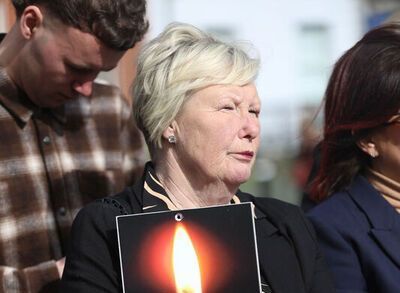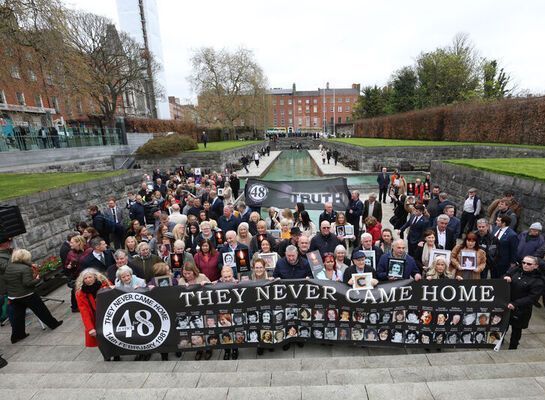Eileen Collins was the first woman to command a space shuttle.
By Geoffrey Cobb
Inducted into the National Women’s Hall of Fame, Eileen Collins has been recognized by “Encyclopedia Britannica" as one of the top 300 women in history who have changed the world. A former air force colonel, military instructor and test pilot, Collins became both the first female pilot, and first female commander, of a space shuttle.
Eileen Collins was born in Elmira, N.Y., on Nov. 19, 1956. Her Irish ancestors came to America in the mid-1800s, settling in Pennsylvania and Elmira. Collins’s love of airplanes and flying began as a child. She recalled, “When I was very young and first started reading about astronauts, there were no women astronauts.” Inspired as a child by the Mercury astronauts, Collins started reading anything she could find on space and airplanes and especially astronauts. In fourth grade, she read a Junior Scholastic Magazine article on the pros and cons of spending money on the space program, but the 8-year-old Collins could not think of any cons about investing in space exploration.
The absence of female astronauts didn’t faze her; however, she kept her dreams of flying in space secret. “I never told anybody I wanted to be an astronaut or pilot,” she said. “I consciously never talked about it because I knew people would say, ‘You can’t do that.’ And I didn’t want to hear it… Even when I started my flying lessons – and this would have been when I was between my junior and senior year in college – I didn’t tell my friends. I don’t think I even told my parents.”
She graduated from a junior college with a degree in Math and then matriculated at Syracuse University and her timing was perfect. New opportunities were opening up for women in aviation. In 1978, Collins enlisted in the Air Force and became one of four women admitted to Air Force Undergraduate Pilot Training at Oklahoma’s Vance Air Force Base, where she faced intense scrutiny. During her first month of training, she realized she had a chance to make her childhood dream of space flight a reality. "I wanted to be part of our nation's space program. It's the greatest adventure on this planet — or off the planet, for that matter. I wanted to fly the Space Shuttle.”
In 1979, Collins became the Air Force’s first female flight instructor at the United States Air Force Academy in Colorado, where for the next 11 years she taught both flying and math. As a C-141 Starlifter transport aircraft commander, Collins also participated in the American invasion of Grenada in 1983, delivering troops and evacuating medical students. She continued her training at the Air Force’s Institute of Technology and was one of the first women to attend Air Force Test Pilot School, which she graduated from in 1990, eventually achieving the rank of Air Force Colonel. Collins also earned an M.S. in operations research from Stanford University in 1986 and an M.A. in space systems management from Webster University, St. Louis, Mo., in 1989. Collins married pilot Pat Youngs in 1987 and is the mother of two children.
Collins was selected to be an astronaut in 1990 and completed astronaut training in July 1991. After tours at Kennedy Space Center, working on the shuttle launch and landing, and at the Johnson Space Center, working as a shuttle engineer and capsule communicator, she made history in 1995 when she became the first woman to fly a space shuttle, successfully piloting “Discovery.” In recognition of her achievement as the first female shuttle pilot, she received the Harmon Trophy, presented to the world’s top male and female aviators. Two years later, Collins again made history when she became the first female to dock with the Russian space station Mir, piloting “Atlantis.” Prior to the docking of “Discovery” with the space station, Collins piloted the shuttle through a full 360° pitch maneuver, becoming the first person to do so with an orbiter, which allowed her crew members to photograph the ship’s underside for possible damage.
In 1999, with hundreds of hours of experience in space flight under her belt, Collins had her greatest achievement when she became the first ever female to command the space shuttle, piloting “Columbia” in 1999 during its deployment of the Chandra X-Ray Observatory. After “Columbia” was destroyed in the February 2003 disaster, the space shuttle fleet was grounded until July 2005, when Collins commanded Discovery on a “return to flight” mission, checking new safety modifications, while resupplying the International Space Station. The successful mission would mark her final time in space.
In 2006, Collins retired after a 28-year distinguished career in the Air Force, logging more than 6,751 hours in 30 different types of aircraft and more than 872 hours in space on four separate space flights. That same year, Collins won the National Space Trophy and University College Dublin conferred on her the honorary Doctor of Science degree of the National University of Ireland.
Collins has continued to garner honors and awards. She was asked to speak at the 148th commencement of her alma mater Syracuse University. On April 19, 2013, Eileen Collins was inducted into the United States Astronaut Hall of Fame. In 2016, Collins was she inducted into the Irish American Hall of Fame and she also spoke at the Republican National Convention in Cleveland, Ohio before a national audience. The main entrance to Syracuse Hancock International airport was named in her honor as well.
Collins has remained active. She became director of the United Services Automobile Association and has served also the U.S.S.A in a number of other roles. Collins has also served as an analyst covering Shuttle launches and landings for the CNN network. There was discussion that President Trump would even name her NASA administrator. Today Corning Community College, the place where Collins began her amazing career, honors her with the Eileen Collins Observatory, a fitting tribute to the school’s most illustrious graduate.










